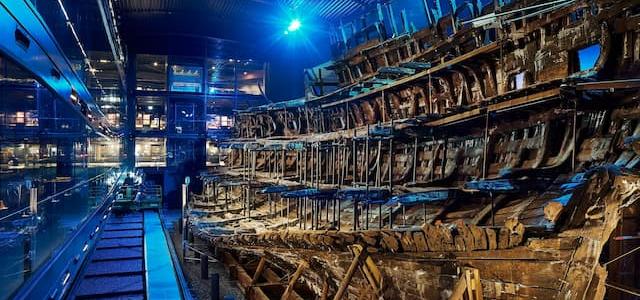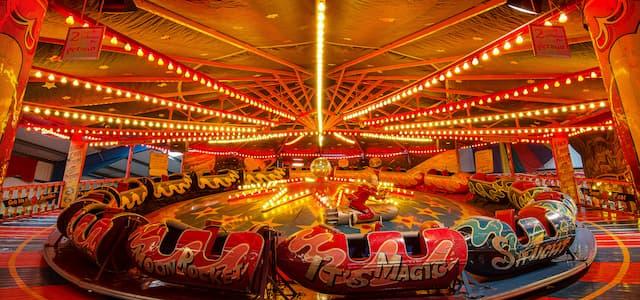
Labours of the Months: Norwich’s newly-acquired medieval stained glass
Norwich Castle Museum and Art Gallery has today announced its acquisition of a unique set of late-medieval stained glass round windows which take as their theme the working lives – and leisure times –experienced by our early sixteenth-century forebears.
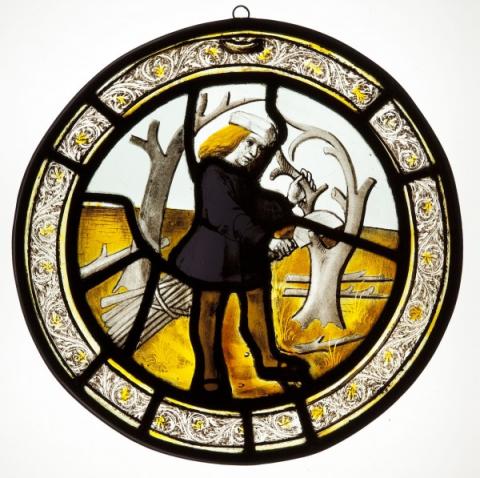
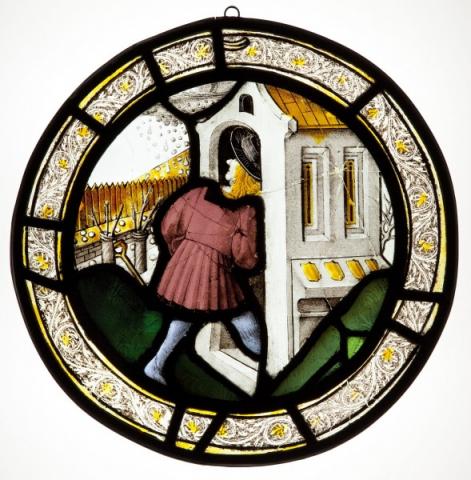
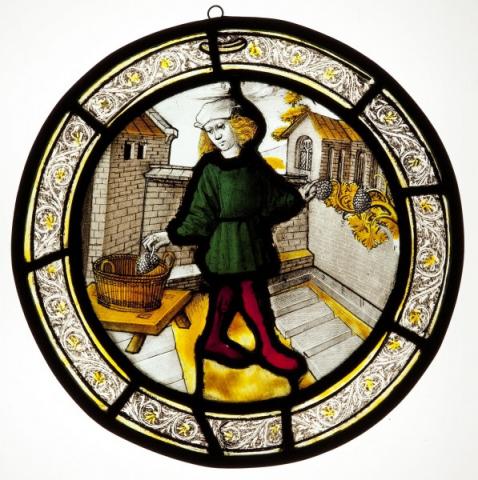
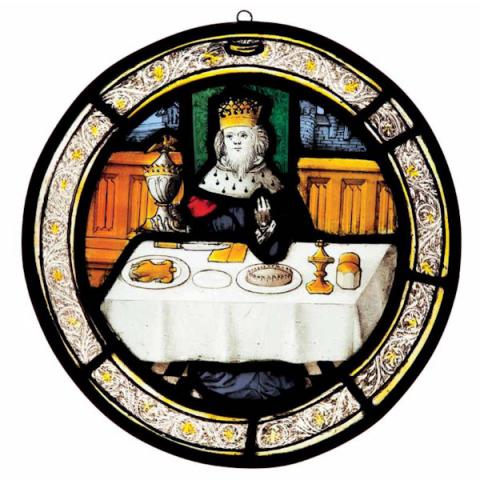
The set of Roundels represent half of a surviving set of eight, from an original twelve, depicting the Labours of the Months. They were acquired with support from the National Heritage Memorial Fund (NHMF); the Art Fund; the Pilgrim Trust; the Friends of Norwich Museums; the Ruddock Foundation for the Arts; and the Paul Bassham Charitable Trust. Two others have been acquired by London’s Victoria and Albert Museum.
The complete cycle of Roundels offered a full picture of the seasonal nature of life in pre-industrial England. They depicted the central tasks of the agricultural year, such as sowing, reaping, pruning or harvesting; in many instances, however, they also embraced the importance of the ‘work/life balance’, and included scenes of feasting, sitting by the fire, hawking or courtly love affairs.
Dr. Francesca Vanke, Keeper of Art & Curator of Decorative Art, Norwich Castle Museum & Art Gallery, commented: “These roundels are extraordinarily rare. No other comparable works are known to survive in such good condition anywhere else in the region. What makes these five-centuries-old images so remarkable is their realism: they seem really quite contemporary. Our lives today may no longer be so strictly ruled by the seasons, but the activities we see portrayed are timeless. Luxuriant relaxation with good food and fine wine, contrasted with the labourer’s diligent and focused attention on his work, speak to experiences of work and leisure that seem strikingly familiar. Even the British obsession with the weather is included, as one unlucky man interrupts his gardening to take shelter from a hail storm! The figures are rendered in beautiful detail. It’s incredible how the lives of our late-medieval ancestors, in many ways so different to ours, can feel so close when we encounter them through artworks such as these.”
Dame Jenny Abramsky, Chair of the NHMF, said: “These four stained glass roundels are unique works of art. They not only showcase the high standard of craftsmanship taking place in Norwich in the 16th-century but also give a fascinating insight into the life of local merchant and mayor, Thomas Pykerell. There was a risk that they might be sold into a private collection, so the National Heritage Memorial Fund is particularly pleased have worked in partnership with a number of other supporters in order to keep them in their East of England home.”
Stephen Deuchar, Director of the Art Fund, added: “We are so pleased that these exquisite works have found such a worthy home in Norwich Castle Museum and Art Gallery. Their local importance as outstanding examples of the Norwich School of medieval stained glass is more than matched by their more general importance as documents of social history.”
The eight surviving Roundels in this series have had a complex history. They were probably originally made for the still extant house of a Norwich mayor, Thomas Pykerell. They were known to have been installed at a stately home, Brandiston Hall in central Norfolk, from sometime in the mid-nineteenth century until 1985. At that point scholars lost track of the Roundels until last year, when a collector bought them and offered them to Norwich Castle Museum & Art Gallery. The Roundels predate Brandiston Hall by at least a century, however, as the Hall was not built until 1647. It has been alleged by authorities including Nikolaus Pevsner that they were at one time installed in nearby Marsham Church. The artist has been traditionally identified as one John Wattock from Norwich, but the precise origins of the work remain a mystery.
The Roundels were acquired for £194,000. The NHMF awarded £93,000 and the Art Fund awarded £70,000, with the rest of the funding coming from, The Pilgrim Trust (£18,000), Friends of Norwich Museums (£6,000), Ruddock Foundation for the Arts (£4,000) and Paul Bassham Charitable Trust (£3,000).
Notes to editors
The Art Fund is the national charity for art, helping UK museums and galleries to buy, show and share art. Over the past 5 years, the Art Fund has given £24million to buy art and supported a range of projects and programmes aimed at helping more people enjoy art. It is independently funded by nearly 90,000 supporters who purchase a National Art Pass, costing from just £37.50, which gives free entry to over 200 museums, galleries and historic houses across the country as well as 50% off major exhibitions. Find out more about the Art Fund and how to buy a National Art Pass at www.artfund.org.
Further information
Phil Abraham, Press Relations Manager, Art Fund
020 7225 4804 / 07788 977 392 / email: pabraham@artfund.org
Katie Owen, Senior Media Manager, NHMF press office
020 7591 6036 / Out of office hours mobile: 07973 613 820 / katieo@hlf.org.uk

